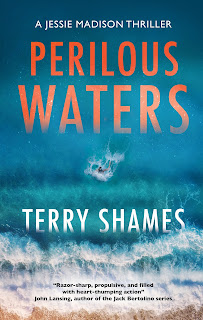I’m seeing more diversity offered in reading these days and am reading a lot more diverse protagonists and subjects. I feel as if it’s opening up my world. What trends have you noticed in the last year, for better or worse?
Brenda here.
I remember my good friend creating a gay character some twenty years ago and being told by the publisher that this would greatly limit her book's appeal. She was advised to remove the gender diversity. Happily, this narrow-minded lens has opened, and books, television, movies, even commercials, are more honestly portraying the true make-up of society.
Sometimes, I believe readers have been way ahead of publishers, agents and other movers and shakers in the book industry when it comes to reading choices and what 'sells'. For instance, Canadian authors are often told that they need to set our books in the U.S. if we want to have a bestseller. However, readers I've spoken with about this, both Canadian and American, are perplexed -- they enjoy books set in Canada and don't consider this an issue. I believe time is bearing this out as more and more books with Canadian settings are finding an international audience.
But this week's question asks about diverse protagonists and subjects. I've also noticed a greater choice in this regard and have enjoyed reading some fabulously diverse stories, particularly by Indigenous authors. Books take us into other people's lives and give us a greater understanding of the human condition and enhance empathy across cultures.
I recently sat in on a virtual webinar given by a black, female author who spoke about creating diverse characters in our stories. I was pleased when she encouraged all writers to create characters from diverse cultures and backgrounds, but to go beyond the stereotypes to have them be fully rounded and realistic. After all, our books should be a true reflection of society with very real, diverse people populating the pages. This seems like good advice and matches how I view my characters.
In this same webinar, the presenter offered statistics to show that diverse writers still have fewer opportunities to break into the industry. So, readers appear to be ahead again on their openness to embrace books from all cultures, genders and locales. In fact, I believe we have a thirst for these stories. Everyone needs to see themselves reflected in books in leading roles. How many times have we heard successful people of colour say that growing up they never saw themselves on television, or read about people of their culture or gender identity in books and stories. Sometimes, it was one break-through role model that made them feel seen and sparked them to spread their own wings.
Readers can continue to support diversity through the authors we champion and by the books we chose to read. My wish is that diversity will continue to be celebrated -- because honestly differences are what make this life interesting -- while diverse characters and stories become so accepted in literature that we don't even need to have this discussion.
Website: www.brendachapman.ca
Instagram & Facebook: BrendaChapmanAuthor
Twitter (X): brendaAchapman



















